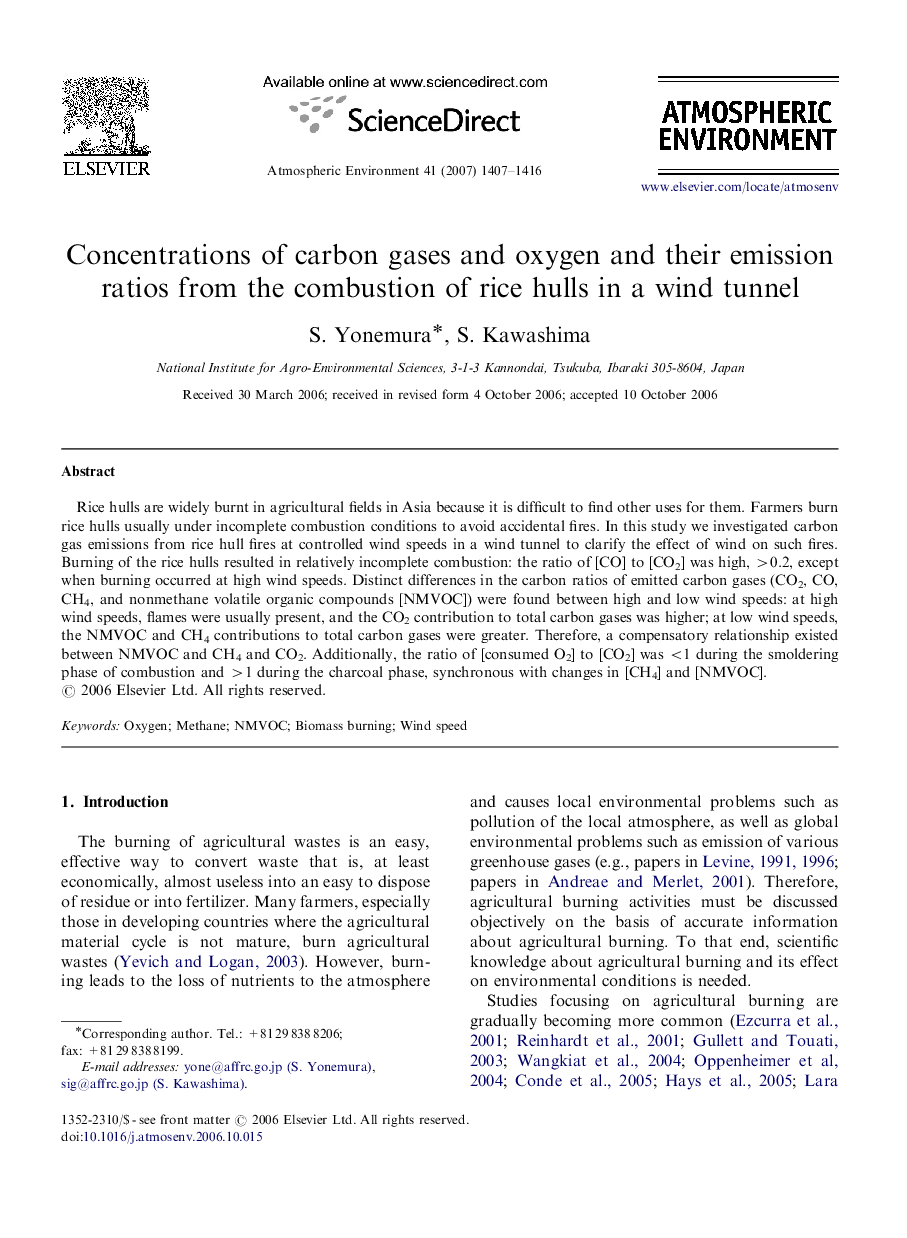| Article ID | Journal | Published Year | Pages | File Type |
|---|---|---|---|---|
| 4444130 | Atmospheric Environment | 2007 | 10 Pages |
Abstract
Rice hulls are widely burnt in agricultural fields in Asia because it is difficult to find other uses for them. Farmers burn rice hulls usually under incomplete combustion conditions to avoid accidental fires. In this study we investigated carbon gas emissions from rice hull fires at controlled wind speeds in a wind tunnel to clarify the effect of wind on such fires. Burning of the rice hulls resulted in relatively incomplete combustion: the ratio of [CO] to [CO2] was high, >0.2, except when burning occurred at high wind speeds. Distinct differences in the carbon ratios of emitted carbon gases (CO2, CO, CH4, and nonmethane volatile organic compounds [NMVOC]) were found between high and low wind speeds: at high wind speeds, flames were usually present, and the CO2 contribution to total carbon gases was higher; at low wind speeds, the NMVOC and CH4 contributions to total carbon gases were greater. Therefore, a compensatory relationship existed between NMVOC and CH4 and CO2. Additionally, the ratio of [consumed O2] to [CO2] was <1 during the smoldering phase of combustion and >1 during the charcoal phase, synchronous with changes in [CH4] and [NMVOC].
Related Topics
Physical Sciences and Engineering
Earth and Planetary Sciences
Atmospheric Science
Authors
S. Yonemura, S. Kawashima,
